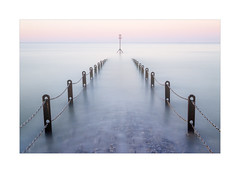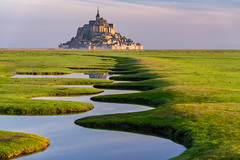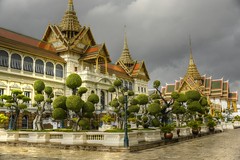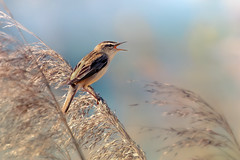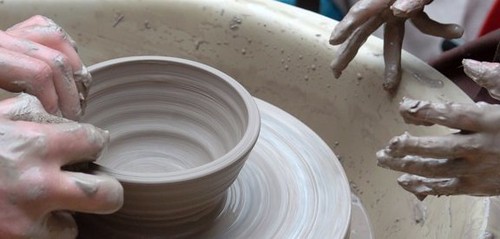Archive for category Pubs
Charity pub quiz at the Duke William
THE DUKE WILLIAM
St John’s Square, Burslem
GENERAL KNOWLEDGE QUIZ
In aid of
THE DOUGLAS MACMILLAN HOSPICE
And presented by
THE POTTERIES PUB PRESERVATION GROUP
Quizmaster
MERVYN EDWARDS
WEDNESDAY 26th JANUARY, 2011
Here’s your chance to support a fabulous Burslem pub and a tremendous charity at the same time! The general knowledge quiz will be presented by MERVYN EDWARDS,Local Historian and Spokesman for the POTTERIES PUB PRESERVATION GROUP.Test your knowledge and enjoy Real Ale in one of the town’s finest pubs!Will all quizzers arrive around 8.30 pm for a 9.00 pm start on the evening. Maximum inany team: 4 members. £1 entrance per player. The first prize is a two-course Sunday lunchat the Duke, for 4 people, whilst second and third prizes will also be offered.
Sunday read with Mervyn Edwards – the ‘hell hole’
Posted by cw in History, hypARlocal, Nile Street, Pubs on November 7, 2010
BURSLEM’ S HELLHOLE
Since this article was first posted, the buildings referred to in the first paragraph have been beautifully refurbished.
The view from the bottom of Holecroft Street, looking at the backs of ageing properties, is somewhat grim. Ageing brickwork and boarded
windows create a picture of decay that would have been ripe for the paintbrush of Arthur Berry. However, even this dereliction and apparent neglect cannot compare with what we would have found in this pocket of Burslem 150 years ago. This was the “ Hell Hole” described by Charles Shaw in “ When I Was A Child” . Shaw grew up in the 1830s and 1840s and wrote in vivid terms about this poverty-stricken area near the junction of Nile Street and Waterloo Road.
What was this area like in Shaw’ s time? Well, the 1851 Ordnance Survey map shows several licensed premises near to the George Hotel, near the
back of which was an open space called Mayer’ s Bank. These are the Blue Ball (its neighbour in Nile Street), the Union beerhouse and the
Church Tavern beerhouse, and on the other side of Nile Street, near the junction withWaterloo Road, the Miners Arms, the British Flag and the
White Lion beerhouses. This area of Nile Street, then, had an abundance of drinking outlets serving a working class area. Beerhouses were often
to be found in abundance where poverty was rife, and the “ Hell Hole” area was no exception. Shaw would have been familiar with many of
these twopenny ha’ penny drinking shops.
The “ Hell Hole” area was demolished in the 1890s, at the time when Shaw’ s recollections first appeared in print. Shaw had worked nearby
and saw at first hand the dilapidated cottages, half-dressed and half-starved women and children. He also heard the swearing and obscenity
which was the accepted verbal currency in these nether regions of the town.
The “ Hell Hole” was a reminder that in Burslem as in many large towns, industrial prosperity marched pari passu with social squalor. Shaw tells
us that bullies lived here and that in his opinion, Burslem’ s “ Hell Hole” “ could not have been surpassed in all of England” . This is clearly
exaggeration as we know that the bigger industrial towns such as Manchester knew both wealth AND poverty on a larger scale. Even in
the Potteries, there were other impoverished areas, where poverty, starvation and drunkenness formed an axis of existence for the
impecunious souls who lived in them. Elsewhere in Burslem, there was Massey’ s Square, between Chapel Lane and Moorland Road, which in
1886 was noted for having sanitary arrangements “ of the most objectionable order.” Here, a collection of old courts containing 90
houses was cleared away in the early 1920s. This was the first slum-clearance project in Stoke-on-Trent, and families were re-housed in
Macclesfield Street where the Corporation built new houses. There was Bostock’ s Square in Hanley, where there were regular fights between
drunken women and prostitutes; and the notorious John Street in Longton.
However, there is no question that parts of Burslem reeked of filth. In Burslem in 1894, there were still 60 houses through whose front doors all waste matter had to be carried; and in 1897, there were 13 Rochdale pails still in use in the town, these being pans that were emptied each week. To the vexation of many Burslem residents, the night-soil carts operated during daytime.
The proximity of Holy Trinity church, built in the 1850s, may be significant. It served an indigent neighbourhood and would have offered
comfort and salvation for some. In describing the insalubrious living conditions of the “ Hell Hole” , Shaw mentions the improvements in 19th
century sanitation brought about by the likes of Edwin Chadwick. It was Chadwick who persuaded Henry Doulton to enter the field of sanitary
production in the 1840s, convincing him of the profit that would be made from producing stoneware sanitary pipes. Ironically, Doulton, one of the great champions of the sanitary revolution in England, came to trade in Burslem – directly adjacent Charles Shaw’ s “ Hell Hole.”
Sunday read with Mervyn Edwards
Posted by cw in Market Place, Pubs on October 31, 2010
The first in a series coming each Sunday
A LOST PUB OF BURSLEM: THE LEGS OF MAN
Burslem Market Place is still the address of several pubs, but the most important pub in Burslem from around 1780 to 1830 stood roughly where
the present Britannia Building Society stands now. An illustration in the Warrillow Collection at Keele University shows Market Place from
the area around what was later Fountain Place. In the middle of the picture is the Town Hall of 1761, whilst the Legs of Man is the building
with the prominent second-floor sign-post. It stood in a prime site in Market Place, and according to sales particulars announced in 1800,
it adjoined “ five Dwelling Houses, Smith’ s Shop and Hovel” and the nearby Marquis of Granby.
In late Georgian times, this was an important meeting place for industrialists and town businessmen. It was also Burslem’ s first coaching
inn. Allbut’ s directory (1802) tells us that the Expedition coach left the Legs of Man for London every day at 6.00 a.m. Another coach departed
from the pub at 6.00 p.m., en route to Liverpool. By 1818, the Light Post, Regulator and Prince Cobourg coaches were recorded as calling at
the Legs of Man on their way to Liverpool, Birmingham and London.
The post was also delivered to the pub with the daily mail coaches from London to the North running through Burslem by 1790.
Charles Cotton, the landlord of the Legs of Man, was postmaster by 1790. The Staffordshire Advertiser announced in 1825 that his daughters,
the Miss Cottons, had taken on the “ Legs of Man and Post-Office” on their own account, the inn having been “ conducted for more than
forty years past” by Charles. The newspaper notice suggests that the daughters soon made efforts to create a female-friendly pub: “ The Miss
COTTONS flatter themselves that the alterations and improvements proposed to be made will meet with the approbation of Commercial
Gentlemen, by whom the house has been hitherto favoured. It will be their particular desire also, to render the Inn agreeable to Ladies who may
honour them upon their journies [sic].” A post-office at Miss Cotton’ s, Market Place, is still referred to in 1834, whilst the Hark Forward coach
continued to call at the pub on a daily basis, en route to Birmingham and Wolverhampton by this time.
Public meetings and dinners were held with great regularity at the Legs of Man. Some were held to celebrate important victories during the
Napoleonic Wars. Gentlemen attended a public dinner to celebrate George IV’ s Coronation in 1821, whilst the inn also played host to the
annual Pitt Dinner, which celebrated the birthday of the late William Pitt (1759-1806), the former prime minister.
It will be seen that the suitability of the attached assembly room was a real money-spinner for the licensee. A meeting of owners and occupiers
of Burslem public houses met in the room in March 1830, in order to draw up plans to oppose the imminent Beer Act, which became law in
October. This permitted any householder to sell beer from his own home, as long as he paid two guineas per year to the exciseman. Fully-licensed public houses such as the Legs of Man did not welcome the competition.
The inn declined in popularity after about 1830, partly due to the growing prosperity of the nearby Leopard. The decline of the Legs of Man is
alluded to in the Staffordshire Advertiser at the time when Mary Holland (formerly of the Cross Keys Inn, Burslem) took over as licensee in
1837: “ It will be her study to restore the celebrity of this old-established Commercial House, which has undergone a thorough and complete
repair; the beds and furniture are newly-purchased: and she trusts the general comforts of the Inn, combining moderate charges with exertion
and regularity, will render it every way worthy of public favour” . A daily Ordinary was advertised, as well as “ Lock-up Coach-houses,
extensive and excellent Stabling, with attentive and obliging servants.”
Notwithstanding these improvements, Mary Holland removed to the George Hotel in 1843. Sales particulars in the local press particularly
referred to the inn’ s commercial room and the bar, as well as the mash tubs and other utensils used for brewing on the premises.
The inn can also claim to have played a minor role in the establishment of art education in Burslem, for the town’ s first art school (its second was
incorporated in the later Wedgwood Institute, and the third in the School of Art in Queen Street) was based in the assembly room of the Legs of
Man. This Government School of Design supervised by W J Muckley from 1853 to 1858, closed partly “ from being situated in a villainous
room in a locality where no-one having physical decency, to say nothing of health, would go.” The publican apparently kept pigs below!
Bulls Head and Gorgeous Homes in Burslem to be renovated with help of Townscape Heritage Initiative | Titanic Brewery
Posted by cw in Market Place, Organisations, Businesses or Charities, Pubs, St Johns Square on September 25, 2010
A Budding Burslem in Bloom?
Posted by cw in Green spaces, Market Place, Organisations, Businesses or Charities, Pubs on June 30, 2010
Great – summer’s here … the hanging baskets appeared out of the blue, the efforts of a local lad working on his allotment growing flowers from seed purely to make Burslem look beautiful, and we are honoured to show them off.
Both Dave at the Roebuck Pub and Barewall with their prominent corner buildings have joined up in this timely flowering display and are putting out a call to other businesses in town to join in the summer display.
If you are interested in taking hanging baskets or window boxes for your premises, drop in and have a chat with Dave at the Roebuck.
Come see the show over at the North end of Market Place – could this be the start of a budding Burslem in Bloom?
The Summerhouse Club
Posted by clarewhite in Bournes Bank, History, Pubs on June 30, 2010
Bull baiting in Burslem
Posted by cw in Festivals, Holidays or Wakes, History, Longport, Pubs, Sneyd Green, St Johns Square on March 1, 2010
by Mervyn Edwards
The Burslem Festivals of recent years have been civilised affairs compared to some of the Wakes celebrations of yore which saw bulls being baited in the middle of the town.
